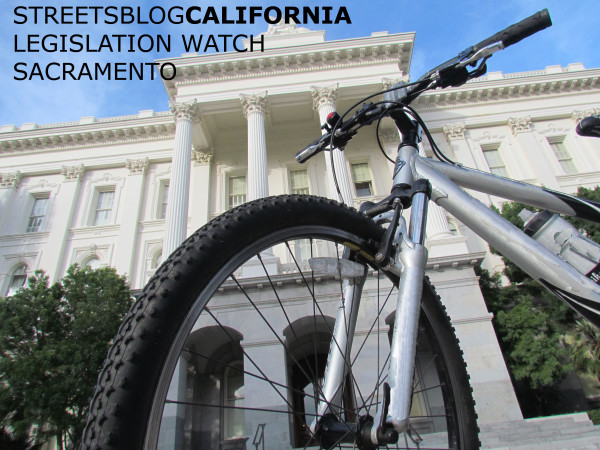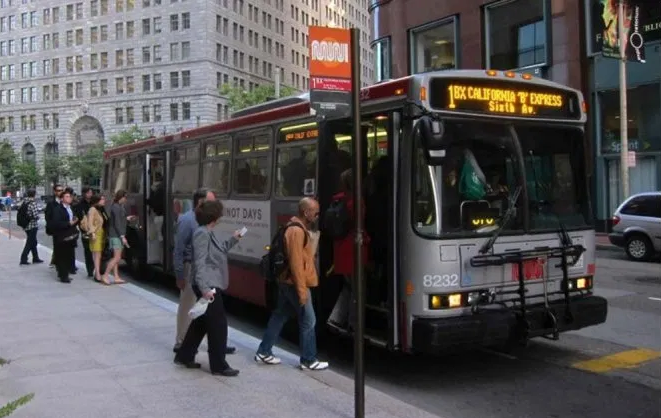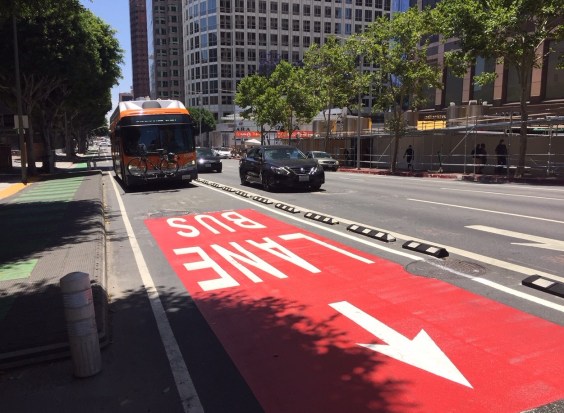The Assembly Transportation Committee passed a bill this week aimed at increasing the effectiveness of S.B. 375, which requires regional agencies to come up with strategies to reduce greenhouse gas (GHG) emissions. The bill, S.B. 150, from Senator Ben Allen (D-Redondo Beach), originally focused on collecting and reporting on data about how much people drive in each region and how effectively regions reduce driving.
That's because transportation is the largest single contributor to GHG emissions in the state, and to meet state goals it will be necessary to reduce the amount of driving. But several groups, including the Bay Area's Metropolitan Transportation Commission (MTC) and the League of Cities, objected to the focus on vehicle miles traveled, among other things, saying that the bill was “overly prescriptive” and that the driving reduction targets were “infeasible” and did not belong in the statute.
Under S.B. 375, the Air Resources Board set emission reduction targets, and left it up to the regions to figure out how to reach them.
S.B. 150 would also have introduced the notion of absolute miles driven, not per capita miles, which is the metric currently used by the Air Resources Board. Of course to fight climate change, absolute emissions reductions are needed, and per capita reductions can be meaningless if the number of California residents keeps increasing. However, the ARB chose to set emission reduction targets on a per-capita basis for a variety of reasons—for one, they are easier to measure and for another, they are easier to reach—at a time when even the setting of those targets was causing a ruckus.
Not that updating those targets has been without controversy.
But to pass the Assembly committee, S.B. 150's sponsors agreed to amend it to delete all references to reducing driving. Now the bill would simply require a report about the progress each region is making towards meeting its GHG reduction targets. The reports would also have to discuss how data supports the climate change strategies chosen in the region and what are considered the best practices for those strategies.
You would think these had already been a requirement under S.B. 375.
In the end, the MTC and the League of Cities removed their opposition and the bill passed the Assembly Transportation committee, whence it will move on to the Environmental Quality committee.
Other Bills
At the same committee hearing, a bill from Senator Jerry Hill (D-San Mateo) that would reduce the fine for “rolling right turns” on red lights to a base fine of $35 moved forward. A representative of the AAA said when the fine was raised higher to match other similar moving violations it was meant to apply to drivers who continued through intersections, not those who were turning right without stopping.
That distinction might be lost on a person on a bike or on foot confronting someone turning right without stopping, however. Nevertheless, the bill doesn't remove the fine entirely, and the final fees would range from $290 to $500 depending on local court fees.
There was no objection voiced at the hearing, and S.B. 493 passed the committee.
Other bills passed at the same hearing included:
- S.B. 614, from Senator Robert Hertzberg (D-Van Nuys), addressing punitive fines for infractions like fare evasion and eating on a bus. The bill would require transit agencies to offer community service or installment plans to youth and low-income people as alternative ways to pay the fines. That bill passed 13-1.
- S.B. 611, also from Senator Hill, addressing disabled placard abuse. Hill said that the DMV was “not doing its job”; that it doesn't properly audit the placards or check to make sure the applications are legitimate. The bill would require the DMV to regularly audit their files, to use the state's “death master file” to cancel placards of deceased people, and to limit the number of replacement placards it gives out.
- S.B. 680, from Senator Bob Wieckowski (D-Fremont), extending BART's authority to develop its land for housing. The bill would simply extend the radius within with BART is allowed to build transit oriented housing from ¼ mile to ½ mile from its stations. BART has over 200 acres of developable land that meets that requirement, so this could add quite a bit of much-needed housing right where it's needed most: within walking distance of BART stations.
There was no formal opposition to the last bill, but Assemblymember Catherine Baker (R-San Ramon) still questioned whether developing housing should be a priority for BART.
The projects would be developed by private developers and cities, using what are now surface parking lots owned by BART. “BART has leveraged over $275 million in other people's money to build housing,” she was told by a BART representative, but she still wanted to know how much “taxpayer's money” goes towards housing developed by BART. “Generally, TOD developments are revenue generators that offset costs” and add riders to the system was the response.
But BART trains are at full capacity, she objected. “And BART is not supportive of extending capacity to other places” -- such as her district, where BART extensions would be very expensive to build. “This just distracts from other priorities like safe trains and increasing capacity,” she said.
“This makes the rule for BART consistent with other regulations that define TOD as ½ mile rather than ¼ mile from transit,” said Wieckowski. “And it will give BART the opportunity to help other efforts to add housing where it's desperately needed.”
The bill passed, with two “no” votes from the Republicans on the committee.





